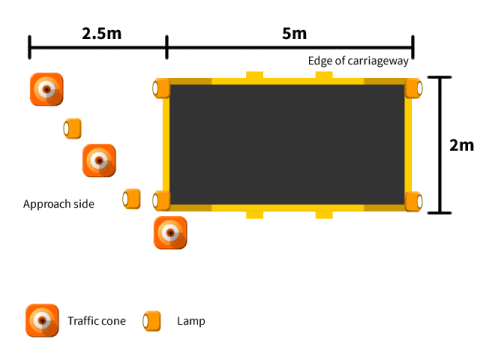Placing a skip on a public Highway
Placing a skip on a public highway the information you should be made aware of before placement
As per the Highways Act 1980: Section 139 Road Traffic Regulations Act, 1984, any person or business who will be placing a skip on a public highway (or a bag, such as a Hippobag) (i.e. not on a driveway or private property) is required to obtain permission in the form of a permit from their local council.
Like everything in life, skip permits are heavily regulated this information can be found in the Highways Act 1980
A skip shall not be placed on the highway without the prior approval in writing of the relevant council’s Chief Engineer or their representative
The Applicant (skip company) shall indemnify the issuing Council against all liability, loss, claim or proceeding whatsoever arising under the statute or common law in respect of the placing, and maintaining of skips on the highway, or their removal therefrom
The Applicant (skip company) must have the minimum required public liability insurance cover (£5- £10 million), Proof of which shall be required
The Applicant (skip company) shall allow clear working days (amount varies depending on the issuing authority) between the date of application for a licence to place a skip on the highway and the date on which the licence is intended to commence
The Applicant (skip company) shall only deposit and remove skips on the public highway between the hours of 7.30 am and 8.30 pm on all days (varies depending on the issuing authority)
This licence does not apply to and does not permit the deposit of materials on the highway
Failure to comply with these conditions is a criminal offence and will result in the licence being withdrawn
The skip shall not exceed 5 metres (16’6”) in length and 2 metres (6’6”) in width
The skip shall be clearly and permanently marked on one of the longer sides (not the end) with the Applicant’s name (skip company), address and telephone number
The ends of the skips shall be painted yellow and provided with vertical markings next to the side edges of the skip in accordance with the Builder’s Skips (Markings) Regulations 1984 and all current relevant specification
A skip shall not be placed on the highway so as to impede the surface water drainage of the highway or to obstruct access to other premises, fire hydrants, gullies, manholes or any apparatus belonging to a Statutory Undertaker or the issuing authority.
Any skip on the carriageway shall be positioned with its longer sides parallel to and as near to the edge of the carriageway as possible.
A skip shall be clearly visible to traffic approaching from either side at a distance of not less than 75 metres (250 feet) and shall not be placed within 20 metres (75 feet) of a road junction
A skip shall not partly or wholly obstruct a footway without the permission of the Chief Engineer or their representative. If such permission has been granted, a 1 metre (3 feet) wide pedestrian walkway must be signed and guarded to segregate pedestrians from traffic and the walkway must be lamped at night
Where more than one skip is placed adjacent to another upon the highway at the same time, the skips shall be positioned as close to each other as possible so that the distance between adjacent skips does not exceed 2 metres (6 feet)
Skips positioned on soft verges must be placed on suitable boards to prevent damage to the verge, (not all issuing authorities allow skips on verges)
A skip shall not be positioned on the highway so as to impede the flow of traffic
A skip on the carriageway shall be protected by three cones positioned on the approaching traffic side as shown in the diagram below

An amber lamp shall be attached to each corner of the skip and when the skip has been placed on the carriageway, lamps must be placed between traffic cones in accordance with the diagram below. Lamps shall be steady and shall comply with Section 43 of the Traffic Signs Regulations and General Directions 1994. They shall remain lit throughout the hours of darkness (between half and hour after sunset and half an hour before sunrise). They shall be placed in such a manner as to not cause a nuisance to pedestrians or vehicular traffic
No skip shall contain any inflammable explosive, noxious or dangerous material which is likely to putrefy or become a nuisance to the users of the highway and the contents of the skip shall be kept damp to prevent nuisance from dust
No skip shall be used in such a way that any of the contents fall on to the highway
No skip shall remain on the highway after the expiry of the licence. (If an extension is required a fresh licence application must be made to the Chief Engineer or his representative two working days prior to the expiry of the existing licence)
Any skip shall be removed as soon as possible and in any case not later than two working days after it has been filled
A skip may be removed or repositioned if required by the Police, the Chief Engineer or his representative
A skip owner placing a skip on the highway is responsible for the removal and proper disposal of the materials placed on the skip irrespective of who has used the skip
On the expiry of the licence, the highway where the skip has been positioned must be left in a clean and tidy condition and any damage to the highway repaired to the satisfaction of the Chief Engineer or his representative
